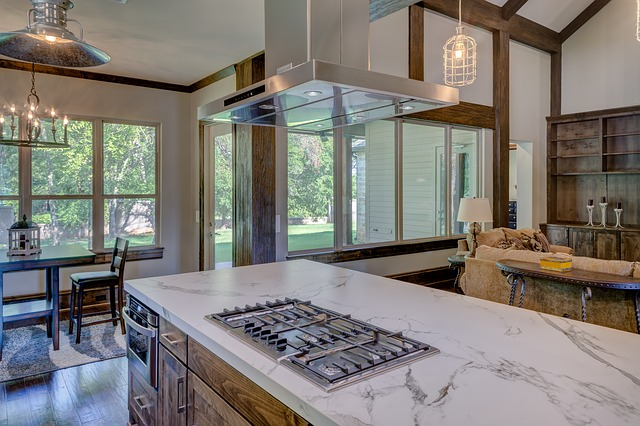
Transform Space with a Convertible Kitchen Island is often referred to as the heart of the home—a place where meals are prepared, conversations are shared, and memories are made. As the epicenter of activity, the kitchen must be both functional and stylish, catering to the evolving needs of modern living. One of the most innovative solutions to maximize space and functionality in the kitchen is the convertible kitchen island.

A convertible kitchen island is a versatile and adaptable piece of furniture that can transform the way you use your kitchen. It offers the flexibility to adjust your kitchen layout based on your needs, whether you’re cooking a meal, entertaining guests, or simply needing extra storage. In this blog, we’ll explore the various benefits of a convertible kitchen island, discuss different design options, and provide tips on how to integrate one into your space effectively.
Table of Contents
1. The Versatility of Convertible Kitchen Islands
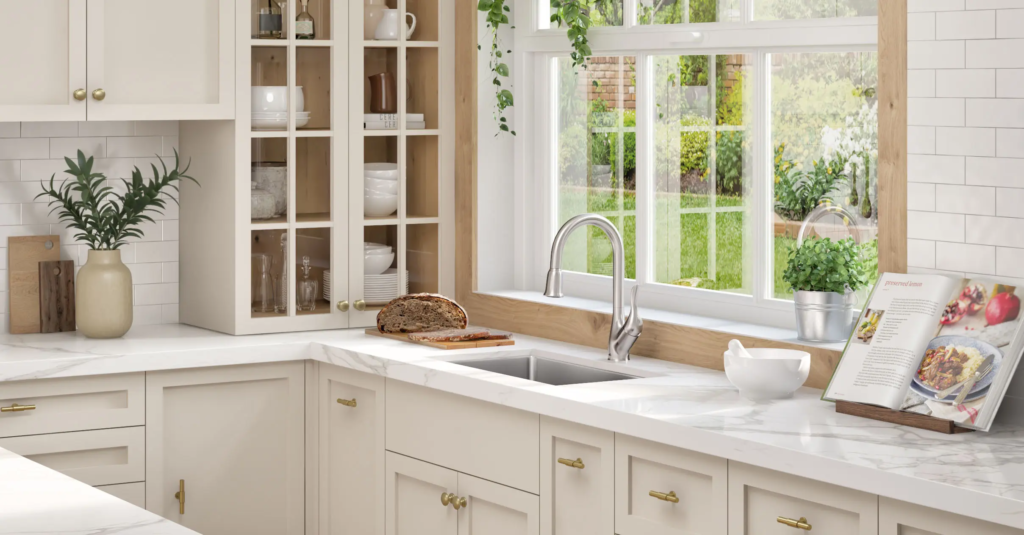
a. Transform Space with a Convertible Kitchen Island Multi-Functional Use
One of the primary advantages of a convertible kitchen island is its multi-functional nature. Unlike traditional kitchen islands, which are often fixed in place, a convertible island can serve multiple purposes, adapting to your needs throughout the day.
For example, a convertible island can be extended to create additional counter space when preparing meals or retracted to save space when not in use. It can also transform into a dining table, a bar, or even a workspace, making it an ideal solution for small kitchens where space is limited.
b. Transform Space with a Convertible Kitchen Island Space Optimization
In many homes, the kitchen is a high-traffic area where space is at a premium. A convertible kitchen island allows you to optimize your available space by offering flexible configurations. Whether you need extra storage, seating, or countertop space, a convertible island can provide it without requiring a larger kitchen footprint.
By maximizing the use of vertical and horizontal space, a convertible island can help you maintain a clutter-free and organized kitchen. This is especially beneficial in open-plan layouts, where the kitchen often shares space with the living or dining area.
c. Transform Space with a Convertible Kitchen Island Ideal for Small Kitchens
For those with smaller kitchens, a convertible island is a game-changer. It allows you to enjoy the benefits of a kitchen island without sacrificing valuable floor space. When not in use, the island can be compacted or moved out of the way, freeing up space for other activities.
In small apartments or homes, where every square foot counts, a convertible island can serve as a dining table, a prep area, or even a desk, depending on your needs. This versatility makes it a practical and stylish solution for maximizing functionality in a limited space.
2. Design Options for Convertible Kitchen Islands

a. Transform Space with a Convertible Kitchen Island Extendable Countertops
One of the most popular designs for convertible kitchen islands is the extendable countertop. This type of island features a countertop that can be extended or retracted as needed. When extended, the countertop provides additional workspace, making it easier to prepare meals or entertain guests.
Extendable countertops are often designed with a sliding mechanism that allows the countertop to slide out from underneath the main island surface. This design is particularly useful in kitchens with limited counter space, as it provides a quick and easy way to expand your work area.
b. Transform Space with a Convertible Kitchen Island Drop-Leaf and Folding Designs
Drop-leaf and folding designs are another popular option for convertible kitchen islands. These islands feature sections of the countertop that can be folded down when not in use, creating a more compact footprint. When additional space is needed, the leaves can be raised, expanding the island’s surface area.
Drop-leaf islands are ideal for small kitchens, as they allow you to adjust the size of the island based on your current needs. Some designs also include folding chairs or stools that can be tucked away under the island when not in use, further saving space.
c. Transform Space with a Convertible Kitchen Island Rolling and Mobile Islands
For those who value flexibility, a rolling or mobile kitchen island may be the perfect solution. These islands are equipped with wheels, allowing you to move them around the kitchen or even into other rooms as needed. This mobility makes it easy to reconfigure your kitchen layout on the fly, depending on the task at hand.
Rolling islands are particularly useful for open-plan spaces, where the kitchen, dining, and living areas are interconnected. You can easily move the island to create a buffet for a dinner party, a bar for cocktails, or an extra prep station for a large meal. When not in use, the island can be moved to the side, freeing up space for other activities.
d. Transform Space with a Convertible Kitchen Island Convertible Dining Tables
Some convertible kitchen islands are designed to double as dining tables, offering a seamless transition from meal prep to dining. These islands typically feature a fold-out or slide-out tabletop that can be extended to accommodate seating. When not in use as a dining table, the island can be used for food preparation or storage.
Transform Space with a Convertible Kitchen Island dining tables are an excellent option for homes with limited dining space, as they allow you to have a functional kitchen island and a dining area in one piece of furniture. This design is also perfect for entertaining, as it provides a central gathering spot for guests.
e. Transform Space with a Convertible Kitchen Island Hidden Storage Solutions
In addition to their functional versatility, many convertible kitchen islands offer hidden storage solutions. These islands are designed with built-in cabinets, drawers, and shelves that can be concealed or revealed as needed. This allows you to keep your kitchen essentials organized and out of sight, maintaining a clean and uncluttered look.
Hidden storage solutions are particularly useful in small kitchens, where counter space and storage are often limited. By incorporating storage into the island, you can reduce the need for additional cabinetry or shelving, freeing up more space for other uses.
3. How to Integrate a Convertible Kitchen Island into Your Space
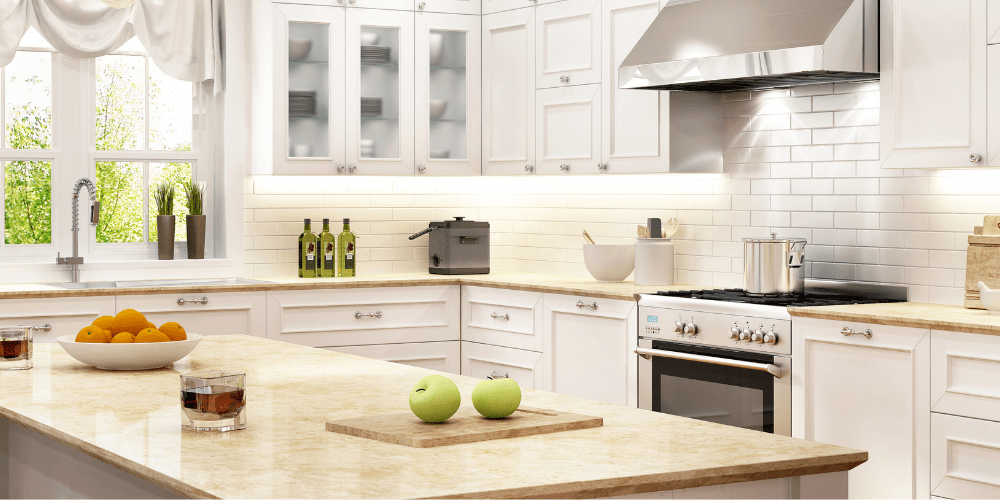
a. Transform Space with a Convertible Kitchen Island Assessing Your Needs
Before selecting a convertible kitchen island, it’s important to assess your specific needs and how you plan to use the island. Consider factors such as the size of your kitchen, the amount of counter space you currently have, and how you typically use your kitchen.
If you frequently host dinner parties or entertain guests, you may want to choose an island with an extendable countertop or a convertible dining table. If storage is a priority, look for an island with built-in cabinets or drawers. By understanding your needs, you can choose a design that will best enhance your kitchen’s functionality.
b. Transform Space with a Convertible Kitchen Island Measuring Your Space
Once you’ve identified your needs, the next step is to measure your kitchen space to determine the appropriate size and configuration for your convertible island. Consider the dimensions of your kitchen, including the distance between countertops, appliances, and walls. This will help you choose an island that fits comfortably in your space without obstructing traffic flow.
When measuring your space, be sure to account for the island’s extended dimensions, especially if you’re considering an extendable or drop-leaf design. You’ll want to ensure that the island can be fully extended without interfering with other kitchen elements.
c. Transform Space with a Convertible Kitchen Island Choosing the Right Materials
The materials you choose for your convertible kitchen island can have a significant impact on both its appearance and durability. Consider materials that complement your existing kitchen design and are suitable for the island’s intended use.
For example, if you plan to use the island primarily for food preparation, you may want to choose a durable, easy-to-clean countertop material such as quartz or stainless steel. If the island will also serve as a dining table, a wood or butcher block countertop can add warmth and character to the space.
In addition to the countertop, consider the materials for the island’s base and storage components. Wood, metal, and laminate are all popular choices, each offering different benefits in terms of aesthetics, durability, and maintenance.
d. Transform Space with a Convertible Kitchen Island Coordinating with Existing Decor
A convertible kitchen island should not only be functional but also complement your existing kitchen decor. Consider the overall style of your kitchen—whether it’s modern, traditional, farmhouse, or eclectic—and choose an island design that enhances the space.
For a modern kitchen, a sleek, minimalist island with clean lines and a glossy finish may be the best choice. In a traditional kitchen, a wood or painted island with decorative details can add charm and elegance. If your kitchen has a farmhouse or rustic style, consider an island with a distressed wood finish or a vintage-inspired design.
e. Transform Space with a Convertible Kitchen Island Lighting and Accessories
Lighting plays a crucial role in highlighting your convertible kitchen island and enhancing its functionality. Consider installing pendant lights or recessed lighting above the island to provide adequate illumination for food preparation, dining, or working. The right lighting can also create a focal point in the kitchen, drawing attention to the island as a central feature.
In addition to lighting, consider adding accessories that enhance the island’s usability and style. For example, bar stools or chairs can be added to a convertible dining table island, providing seating for guests. A decorative fruit bowl, vase, or cookbook stand can add a personal touch to the island’s countertop.
4. Benefits of a Convertible Kitchen Island

a. Transform Space with a Convertible Kitchen Island Enhanced Functionality
One of the most significant benefits of a convertible kitchen island is the enhanced functionality it brings to your kitchen. By offering multiple uses in a single piece of furniture, a convertible island allows you to maximize the efficiency of your kitchen layout. Whether you need extra counter space, storage, seating, or a dining area, a convertible island can provide it all.
b. Transform Space with a Convertible Kitchen Island Space-Saving Design
In homes where space is limited, a convertible kitchen island offers a space-saving solution that doesn’t compromise on functionality. By combining several kitchen elements into one, a convertible island allows you to make the most of your available space, reducing the need for additional furniture or appliances.
c. Transform Space with a Convertible Kitchen Island Flexibility and Adaptability
The flexibility and adaptability of a convertible kitchen island make it an ideal choice for modern living. As your needs change, the island can be adjusted to suit different tasks and activities. This adaptability is especially beneficial in open-plan spaces, where the kitchen often serves multiple functions.
What are the benefits of using a convertible kitchen island in home design?

Convertible kitchen islands offer a versatile solution in home design, maximizing the functionality of the kitchen while providing options for customization and efficient use of space. They adapt to various needs, making them an invaluable feature in modern kitchens.
1. Maximized Functionality
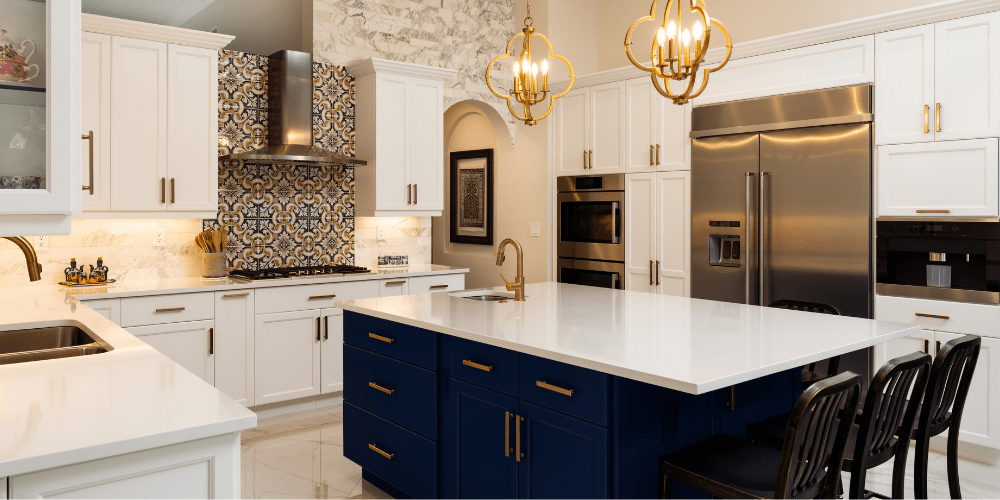
One of the primary benefits of a convertible kitchen island is its ability to serve multiple functions. These islands can transition from a traditional cooking and prep space to a dining area or even a workspace, depending on the homeowner’s needs. This adaptability makes them particularly valuable in homes where space is at a premium or where multiple activities occur simultaneously.
2. Enhanced Storage Solutions

Convertible islands often come equipped with various storage options, including drawers, cabinets, and open shelves. This additional storage helps to declutter the kitchen area and offers convenient access to kitchen essentials, utensils, and pantry items. Enhanced storage solutions make the kitchen more organized and visually appealing.
3. Flexible Seating Arrangements

Many convertible kitchen islands are designed with flexible seating options, allowing homeowners to incorporate bar stools or chairs. This feature enables the island to function as a casual dining space or a social hub for family gatherings and entertaining guests. The adaptability of seating arrangements fosters social interaction within the kitchen.
4. Customizable Design Options
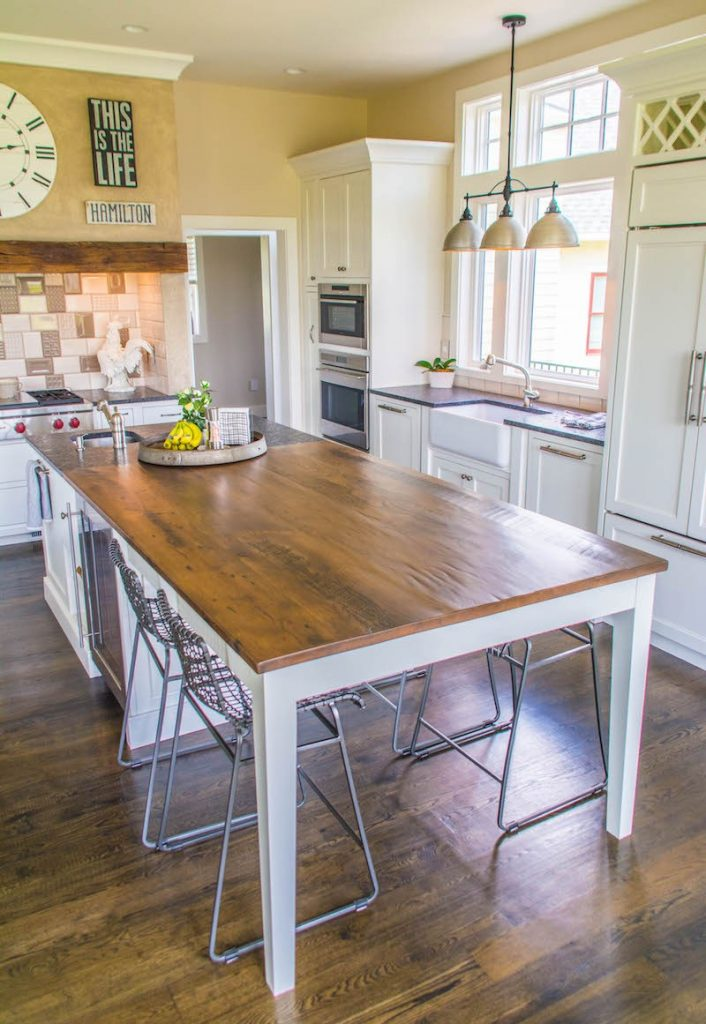
Converting kitchen islands are often customizable to suit different stylistic and functional preferences. Homeowners can choose the size, material, and layout that best fits their kitchen design. This level of customization can include integrated appliances or features like a sink or cooktop, enhancing the overall functionality while complementing the kitchen’s aesthetic.
5. Transform Space with a Convertible Kitchen Island Increased Property Value
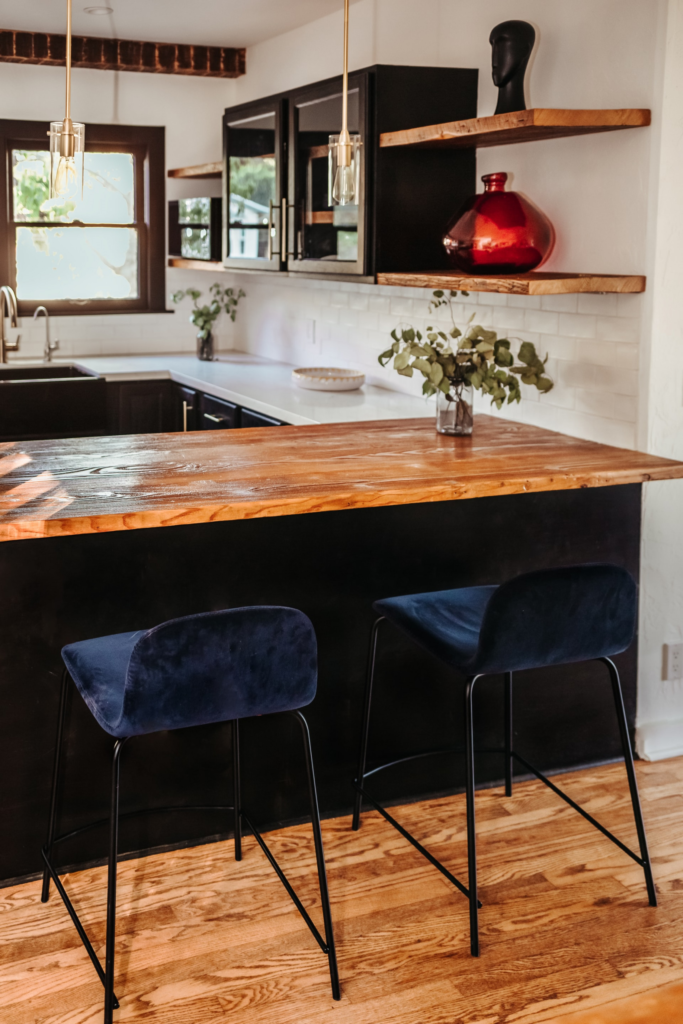
Incorporating a well-designed convertible kitchen island can significantly enhance a home’s value. Potential buyers are often attracted to homes with functional and modern kitchen designs that feature versatile elements such as a convertible island. This investment not only improves the kitchen’s functionality but also showcases the home’s appeal when it comes to resale.
6. Transform Space with a Convertible Kitchen Island Encourages Family Interaction
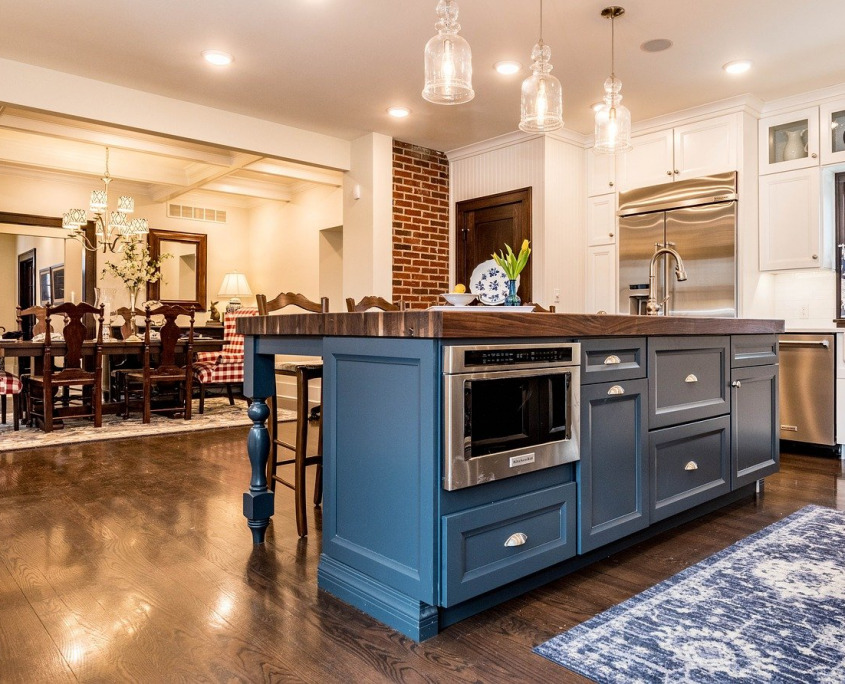
Finally, a convertible kitchen island acts as a central gathering point for family and friends, promoting interaction and engagement. The island can serve as a space for cooking together, homework, or casual meals, fostering a sense of belonging and community within the household.
Overall, Convertible kitchen islands are a practical and attractive addition to any home, merging functionality with style and adaptability for various needs.
What are some common mistakes to avoid when choosing a convertible kitchen island?

Selecting a convertible kitchen island can significantly enhance the functionality and aesthetic of a kitchen. However, there are several common mistakes that should be avoided to ensure that the island serves its intended purpose effectively and integrates well with the overall kitchen design.
1. Transform Space with a Convertible Kitchen Island Choosing the Wrong Size

One of the most frequent mistakes is selecting a kitchen island that is either too large or too small for the available space. An oversized island can create a cramped environment and disrupt traffic flow in the kitchen, while an undersized island can lack the functionality required for food preparation and dining. Ensuring the island fits well within the dimensions of the kitchen is crucial.
2. Transform Space with a Convertible Kitchen Island Not Defining the Island’s Purpose
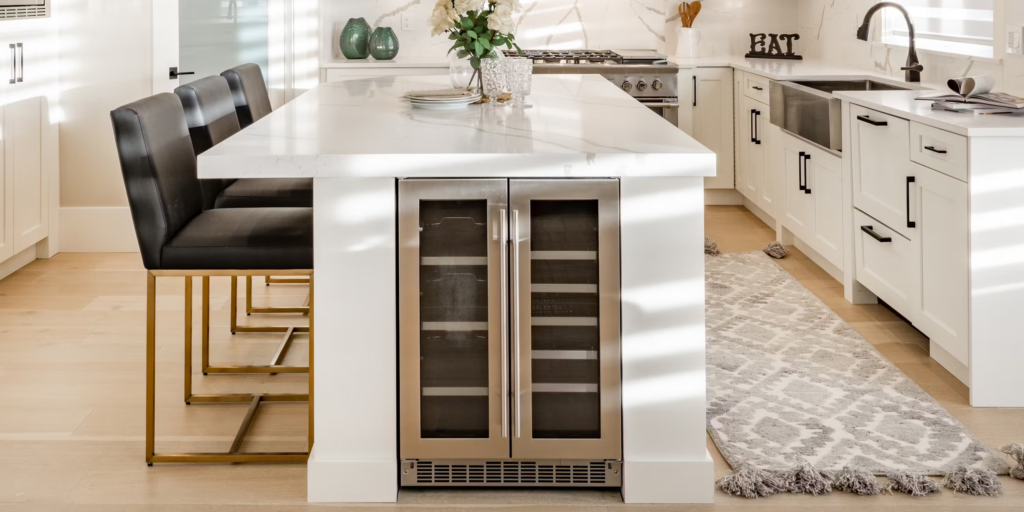
Failing to establish the primary functions of the convertible kitchen island can lead to design inefficiencies. Before committing to a specific design, it is essential to determine whether the island will be used primarily for cooking, dining, or as an additional workspace. This will influence its size, shape, and the inclusion of necessary features like seating or appliances.
3. Transform Space with a Convertible Kitchen Island Ignoring Traffic Flow
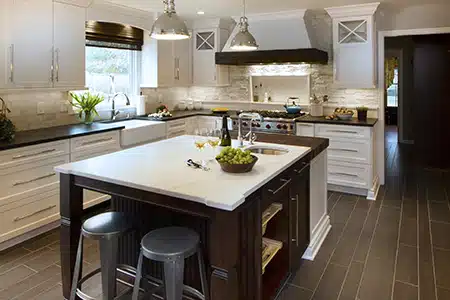
Poor placement of the kitchen island can obstruct the natural workflow within the kitchen. It is important to maintain adequate clearance around the island—ideally 42 to 48 inches—to facilitate easy movement. Avoiding high-traffic areas is also essential to prevent disruptions during meal preparation and cooking.
4. Transform Space with a Convertible Kitchen Island Underestimating Seating Requirements

Overcrowding the island with seats or failing to provide adequate space for each person can hinder its functionality. A good rule of thumb is to allot about 24 inches of space per seat to ensure comfort. This consideration is particularly important in convertible islands that serve dining functions.
5. Transform Space with a Convertible Kitchen Island Failing to Incorporate Appliances

An often-overlooked aspect is the integration of appliances into the design of the kitchen island. Incorporating features such as a sink, dishwasher, or refrigerator can greatly improve efficiency but requires careful planning to ensure that plumbing and electrical needs are met. Neglecting this aspect can lead to a less functional space.
6. Transform Space with a Convertible Kitchen Island Choosing Inappropriate Countertop Materials

Selecting the wrong countertop material can negatively impact the island’s durability, aesthetics, and functionality. It is essential to choose materials that can withstand daily use and match the overall design theme of the kitchen. Mixing materials can be appealing, but they should complement rather than clash with each other to maintain a cohesive look.
By avoiding these common mistakes, homeowners can create a well-designed convertible kitchen island that enhances both the functionality and charm of their kitchen space.
